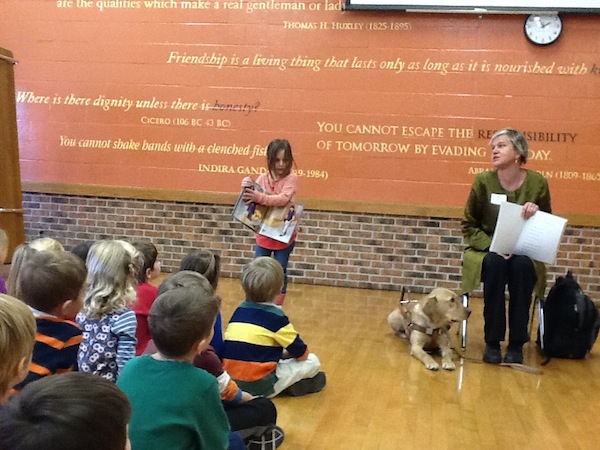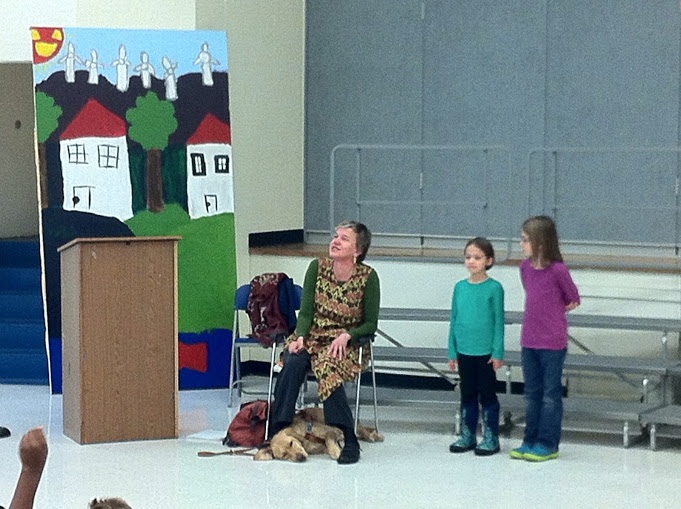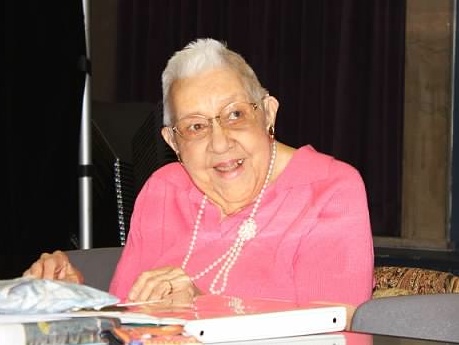The Shoe Game
January 18, 2013 • 31 Comments • Posted in blindness, Braille, Uncategorized, visiting schoolsOur presentation at Joseph Sears Elementary School yesterday started with me reading out loud from the Braille version of Hanni and Beth: Safe & Sound,
and then I explained three rules the kids should keep in mind if they happen to see a guide dog with a harness on: don’t pet the dog, don’t feed the dog, and don’t call out the dog’s name. “Those things can distract a Seeing Eye dog,” I told them. “It’d be like if someone nudged you or kept calling your name wile you were working on your spelling words at school. You wouldn’t be able to concentrate on your work.”
A concerned kindergartner raised her hand. “Can you pet the dog?” I assured her I could, leaning down to do just that. “It’s part of the bonding,” I explained. “She has to know that I’m special. I’m the only one who can pet her when her harness is on, and that helps remind her to take care of me and help me stay safe.”
And with that, we were off. The kids wanted to know how I sit in a chair, if being blind was scary, do I watch TV, how I am able to drive, how I get dressed and whether I ever make mistakes. That last question made me laugh. “One time I gave a presentation at a school and I was wearing two different shoes!” The kids laughed, too, and then the whole conversation turned to, you guessed it: shoes.
- Kid: How do you tie your shoes?
- Me: How many of you know how to tie your shoes?
- Kids: I do! I do! I don’t! Yes! My sister knows how! No! I do!
- Me: Well, those of you who can tie your shoes, I bet if you close your eyes you could tie them, too.
- Kid: (background sound of quiet fumbling at feet) How many shoes do you have?
- Me: Well, after I made the mistake with the shoes that time, I got rid of a lot of shoes. I only have four pairs now: One closes with Velcro, another is a slip on, and two pairs that tie. One of the tie shoes has round shoelaces, the other has flat shoelaces,that’s how I tell them apart.
And that’s when I got the idea. Tell them how to play the shoe game. You form a circle, put blindfolds on, and everyone takes their shoes off and throws them in a pile in the middle of the circle. When the teacher says, “go” you have to find your shoes and put them on. First person with shoes on wins.
The teacher yesterday appreciated right away how this game might teach children how much they can determine from their sense of touch. She promised the kids they’d play next week. “I won’t tell you what day we’re going to do it, though,” she warned. “I don’t want you all wearing slip ons that day!”
Time was up already, but as we got up to leave one boy called out one last question. “What if you were a boy, and you put on Cinderella shoes, and you didn’t know you had them on and you wore them home by mistake?” Hmmm. Guess he’ll just have to wait until the Shoe Game next week to find out.





